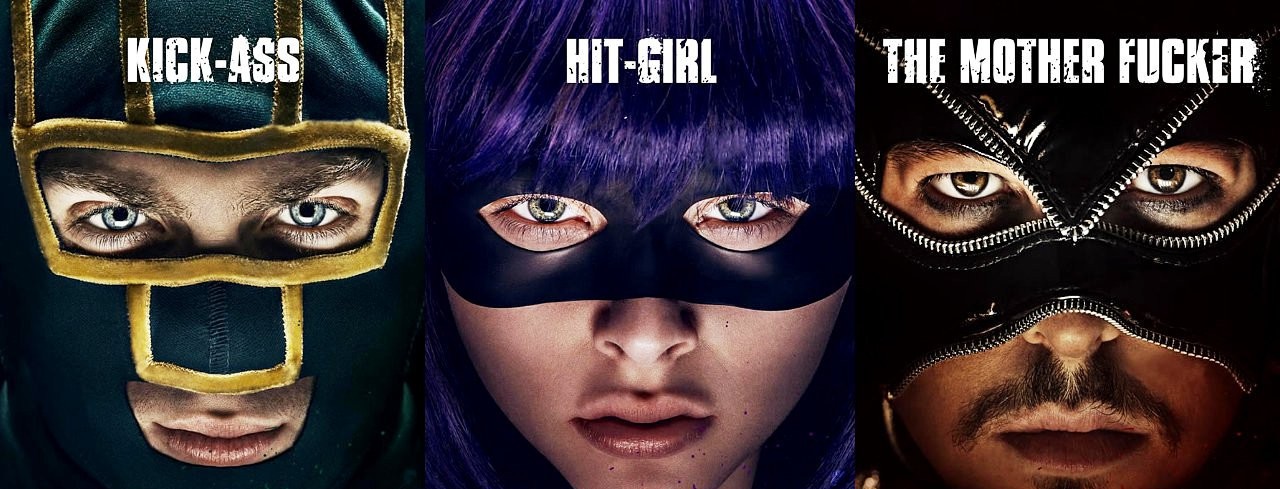The sequel to ‘Kick-Ass’, one of the most popular films of 2010, sees a return of the cast, but not director Matthew Vaughn, who instead personally selected the relatively inexperienced Jeff Wadlow to step behind the cameras and also write the screenplay. Oddly, the change in director isn’t particularly noticeable, a testimony to Wadlow and his adherence to both the previous film and the comic book source material, from Scottish writer Mark Miller.
For the series Miller has openly stated that the story is autobiographical, primarily in that when he was young, he and his pals decided to actually train to become superheroes. Eventually, reality kicked in and they changed their minds, but when writing the comics his desire to play with this concept together with his founding love of the genre produced a curious, violent, blend – central character ‘Kick-Ass’ with no powers whatsoever, trying to fight crime and often being brutalised in the process, and other characters like ‘Hit-Girl’, a schoolgirl with deadly fighting skills and an unparalleled eloquence for one-liners, who is for all intents and purposes a real superhero. Therein lies the founding problem with the series on the big screen – it’s a fun blend, but one constantly compromised by the need to get the balance spot on, an all but impossible task that sucks the heart out of the story, leaving the supporting characters, like Hit-Girl, a lot more interesting than the fraudulently motivated central one.
‘Kick-Ass 2’ sees a raft of people don capes and spandex and take to the streets to fight crime, all after being inspired by the exploits in the first movie, and Kick-Ass finds himself in a sort of very low-key Avengers style gang. Here, the aforementioned balance is constantly rattled around, with severe and dire consequences applied via a layer of gloss. A scene involving the killing of a dog was removed from the film, as was a rape scene – although the footage left in the film suggests the only reason the rape doesn’t happen is because the villain can’t get it up at the time. It’s all a little too much – sensible deletions for the sake of trying to focus on a fun, comedy comic book film, and yet it leaves the feeling of something sinister that isn’t quite being given the serious treatment it needs.
Jim Carrey has a fantastic cameo (much like he did in ‘The Incredible Burt Wonderstone’) as Colonel Stars and Stripes, but has since distanced himself from the film in the wake of the Sandy Hook shootings. This is the statement he released;
“I did Kick-Ass a month before Sandy Hook and now in all good conscience I cannot support that level of violence. My apologies to others involved with the film. I am not ashamed of it but recent events have caused a change in my heart.”
And the response from Chloë Grace Moretz (who plays Hit-Girl);
“It’s a movie. If you are going to believe and be affected by an action film, you shouldn’t go to see ‘Pocahontas’ because you are going to think you are a Disney princess. If you are that easily swayed, you might see ‘The Silence of the Lambs’ and think you are a serial killer. It’s a movie and it’s fake, and I’ve known that since I was a kid… I don’t want to run around trying to kill people and cuss. If anything, these movies teach you what not to do. Each to their own. I respect [Carrey’s] decision.” Source : Huffington Post
Interestingly, the penciller for the comics, John Romita Jr, has talked about the violence he has to depict, saying he morally never thought he would be drawing the stuff, but he frankly loves the characters and the fact that it has become a movie – it’s now a guilty pleasure for him. That sort of encapsulates the difficult duality of the thing. Personally I love Hit-Girl arriving and dicing the bad guys (this film is just as gory as the first one) but there’s a definite conceit, an uneasiness to everything. Kick-Ass decides to go back to crime fighting simply because he’s bored, for example, which is a little too convenient after the events of the first film, and here the police seem a little too relaxed about allowing several teams of costumed vigilantes roam the streets – not to mention the fact real superheroes regardless of their costume would make every effort not to be noticed by the public, not withstanding the likes of Iron Man.
Aaron Taylor-Johnson returns as the titular hero, with Christopher Mintz-Plasse, as was hinted at the end of part one, becoming the bad guy – ‘The Motherfucker’. There’s a host of other bad guys who aren’t given enough screen time and barely get one line each, and indeed the climax is nowhere near as good as in its predescessor. Ultimately, it’s wayward but enjoyable, and it still left me in the mood to watch Batman again, which is no bad thing. Part three is being written as the finale. I suspect there will not be much of a happy ending.

